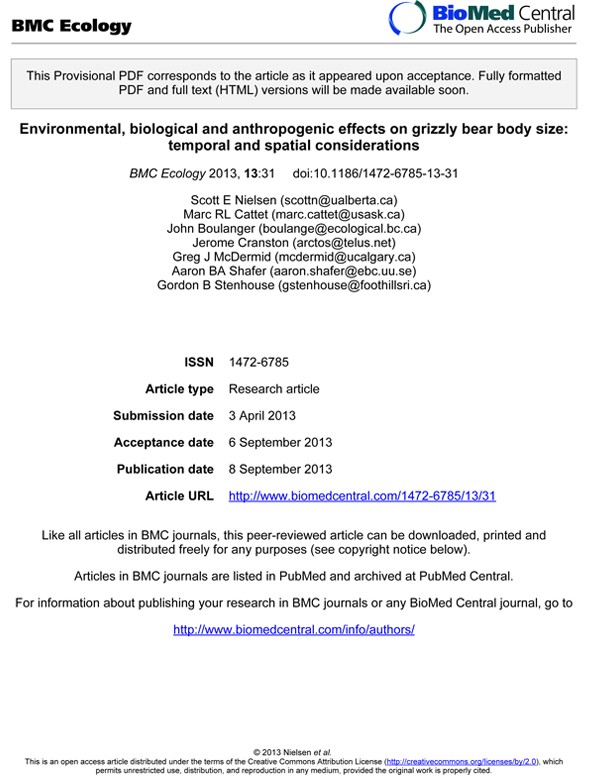Citation:
S. Neilsen et. al. Environmental, biological and anthropogenic effects on grizzly bear body size: temporal and spatial considerations. BMC Ecology 2013, 13:31.
Authors: Scott Nielsen, Mar RL Cattet, John Boulanger, Jerome Cranston, Greg McDermid, Aaron Shafer, Gordon Stenhouse
Abstract:
Individual body growth is controlled in large part by the spatial and temporal heterogeneity of, and competition for, resources. Grizzly bears (Ursus arctos L.) are an excellent species for studying the effects of resource heterogeneity and maternal effects (i.e. silver spoon) on life history traits such as body size because their habitats are highly variable in space and time. Here, we evaluated influences on body size of grizzly bears in Alberta, Canada by testing six factors that accounted for spatial and temporal heterogeneity in environments during maternal, natal and ‘capture’ (recent) environments. After accounting for intrinsic biological factors (age, sex), we examined how body size, measured in mass, length, and body condition, was influenced by: (a) population density; (b) regional habitat productivity; (c) inter-annual variability in productivity (including silver spoon effects); (d) local habitat quality; (e) human footprint (disturbances); and (f) landscape change.






